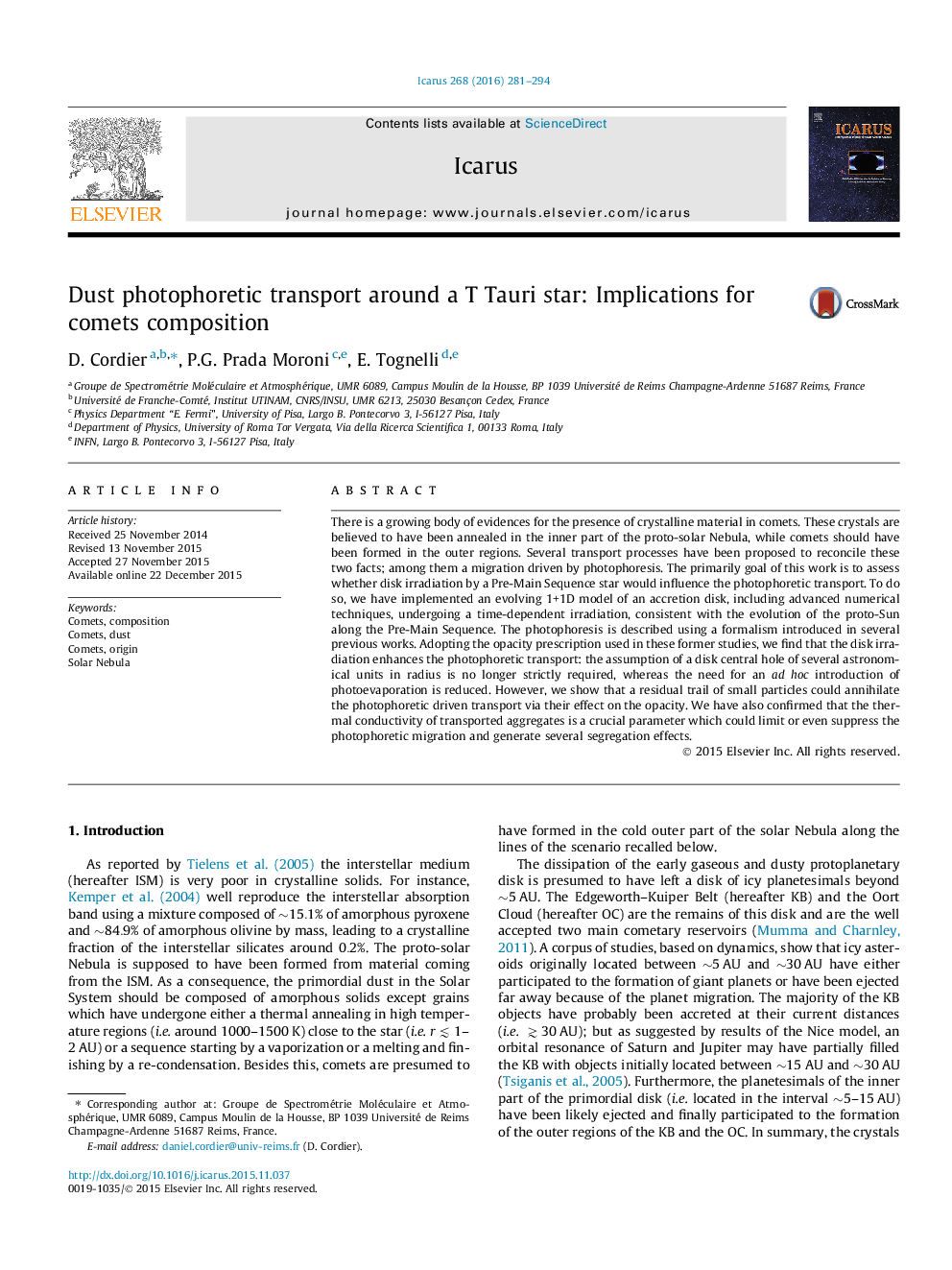| Article ID | Journal | Published Year | Pages | File Type |
|---|---|---|---|---|
| 8135611 | Icarus | 2016 | 14 Pages |
Abstract
There is a growing body of evidences for the presence of crystalline material in comets. These crystals are believed to have been annealed in the inner part of the proto-solar Nebula, while comets should have been formed in the outer regions. Several transport processes have been proposed to reconcile these two facts; among them a migration driven by photophoresis. The primarily goal of this work is to assess whether disk irradiation by a Pre-Main Sequence star would influence the photophoretic transport. To do so, we have implemented an evolving 1+1D model of an accretion disk, including advanced numerical techniques, undergoing a time-dependent irradiation, consistent with the evolution of the proto-Sun along the Pre-Main Sequence. The photophoresis is described using a formalism introduced in several previous works. Adopting the opacity prescription used in these former studies, we find that the disk irradiation enhances the photophoretic transport: the assumption of a disk central hole of several astronomical units in radius is no longer strictly required, whereas the need for an ad hoc introduction of photoevaporation is reduced. However, we show that a residual trail of small particles could annihilate the photophoretic driven transport via their effect on the opacity. We have also confirmed that the thermal conductivity of transported aggregates is a crucial parameter which could limit or even suppress the photophoretic migration and generate several segregation effects.
Related Topics
Physical Sciences and Engineering
Earth and Planetary Sciences
Space and Planetary Science
Authors
D. Cordier, P.G. Prada Moroni, E. Tognelli,
